
Let's open this posting with an article that recently appeared on mLive, a news and information site in Michigan:
Thanks to the efforts of Voxel51, a company that was founded by Jason Corso, professor of electrical and computer engineering at the University of Michigan, street cameras can now be used to measure physical distancing. For your information, a voxel is "any of the discrete elements comprising the three-dimensional space-time volume of a video". A voxel is to a video what a pixel is to an image.
Here is some information on the co-founders of Voxel51:
To monitor physical distancing, Voxel51 uses street cameras that are publicly available on the internet and pulls data from them, allowing the company to calculate a Physical Distancing Index or PDI which measures the amount of human activity in an image. The system detects objects including pedestrians, cars, bicycles and motorcycles every 15 minutes, counts them and calculates a PDI score. Each location has a graph which shows the location's PDI as well as the number of COVID-19 cases and deaths over time. Here is how Voxel51 defines its Physical Distancing Index:
"Our Platform’s computer vision and state-of-the-art deep learning models are able to detect and identify pedestrians, vehicles, and other human-centric objects in the frames of each live street cam video stream in real-time. Using images sampled from each video stream every 15 minutes, we compute the Physical Distancing Index or PDI, an aggregate statistical measure that captures the average density of human activity within view of the camera over time. Outputs of the detections, or positive hits, in the video streams are represented in the data points on the graph above. Note that PDI is a privacy-preserving measure that does not extract any identifying information about the individuals in the video."
Let's look at some examples. Here is a link to the webpage entitled "Measuring the Social Impact of the Coronavirus Pandemic":
Here is the PDI for Times Square in New York City for Monday May 18, 2020 along with the number of COVID-19 cases:
Note the significant drop in the PDI as the social distancing measures were imposed and the continuing rise in the number of COVID-19 cases.
Let's go back in time to look at the people congestion in Times Square well before social distancing was mandated under law. Here is a screen capture of Times Square on February 14, 2020 at 1:48 pm with labels identifying people and cars. On that day and time, the PDI score was 76.94, comprised mainly of people a few cars:
You can also see how close people are to each other.
Now, let's look to Monday May 18, 2020 at just after 12 noon. At that time, the PDI score was 23.94 with people widely scattered and more cars than in the February 14, 2020 video capture:
Voxel51 also has feeds from Hollywood Boulevard in Los Angeles, Seaside Heights in New Jersey, Wind Jammer in Fort Lauderdale, Miami Beach in Miami, Fremont Street in Las Vegas, Temple Bar in Dublin Ireland, Abbey Road in London (UK), Grand Hotel in Prague, Downtown Cadiz in Kentucky, the stockyards at Fort Worth in Texas, Brighton, Detroit and Ann Arbor. In most cases, there has been a significant decrease in human activity since the middle of March, however, some cities are showing far smaller drops than others (i.e. Los Angeles). One city that has seen a substantial change is Las Vegas as shown here:
….and here:
Jason Corso claims that the project protects people's privacy since no individual is identified and the videos are already available to any member of the public. The project also uses state-of-the-art redaction which includes blurring of faces and images on the video footage that is stored. What does concern those of us who care about what little of our privacy remains is how this tool could be used by law enforcement to fine and/or arrest people that are "misbehaving" both during the pandemic and afterwards. While Voxel51's software does not currently provide identification of individuals, there is nothing to say that the technology couldn't be changed in the future to accomplish just that.
Click HERE to read more from this author.
You can publish this article on your website as long as you provide a link back to this page.

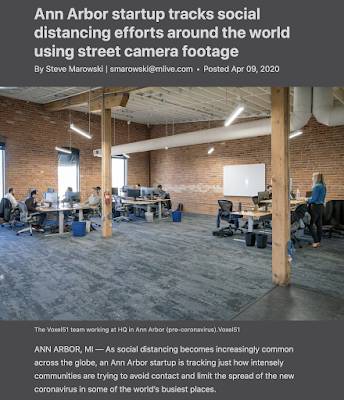
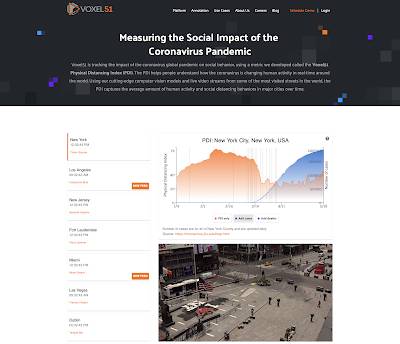
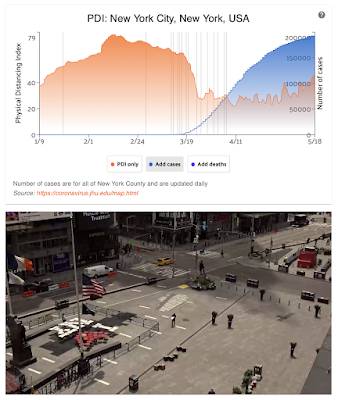
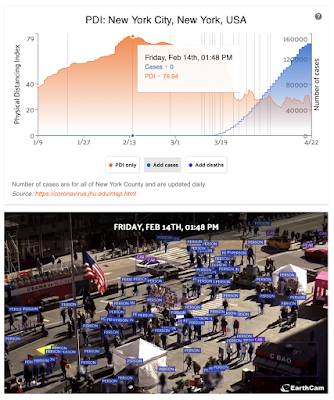
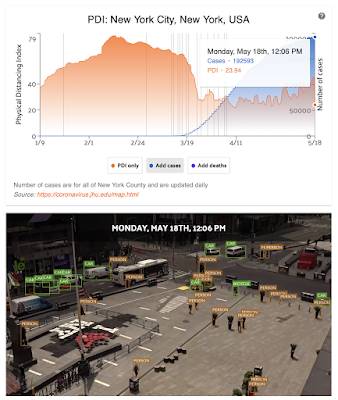
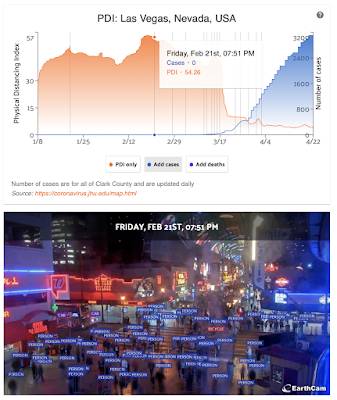
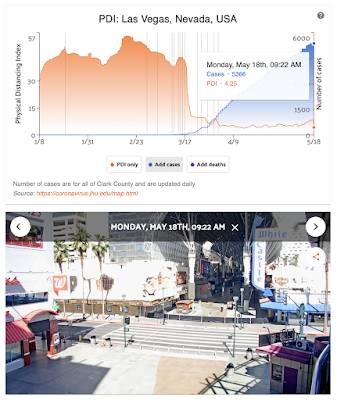
Be the first to comment